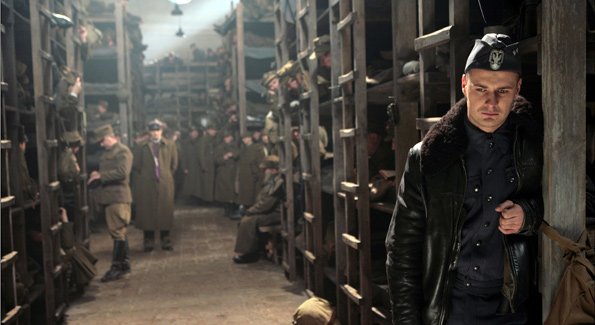Katyn: Poland’s Dark Night
Exactly 70 years ago today, on March 5, 1940, Josef Stalin and the entire Soviet Politburo signed an order to massacre tens of thousands of Polish prisoners of war: officers, mostly reservists; doctors, academics, civil servants, clergymen of all faiths—the cream of the Polish intelligentsia.

If you haven’t seen the great Polish director Andrzej Wajda’s film Katyn—one of my top 10 films of last year—you should take this occasion to make a point of seeing it. (It’s available on DVD and streaming from Netflix.)
Some background: The massacre was uncovered in April 1943 by the Nazis, which found tens of thousands of bodies in mass graves in Russia’s Katyn Forest near Smolensk. A multi-national investigation correctly dated the executions to the spring of 1940—a finding Goebbels attempted to exploit by disgracing Moscow to Washington and London and splitting the Allies.
But the subsequent Soviet investigation, carried out after the area was recaptured from the Germans, claimed that the Nazis themselves had carried out the crime during their occupation in July 1941. Wajda’s film includes excerpts from both Nazi and Soviet newsreels shot at Katyn purporting to show evidence of the other’s culpability.
Moscow’s Western Allies supported this explanation. Not until the 1950s, when the Soviets were again the major worry—and American soldiers in Korea were potentially in line for the same treatment that Polish prisoners received at Katyn—was Washington willing to reopen the issue.
As late as 1988, the Soviets continued to blame the Germans. Finally, in 1989, Gorbachev partially acknowledged Soviet responsibility. Not until 1992 was the original document finally produced. Even today, the Russian Federation does not classify Katyn as a war crime.
At the Katyn Forest today, as far as I can tell, there is still no permanent memorial. Thanks to Wajda, the long-suffering Poles, long deprived of their memory and history by both Nazis and Soviets, have a fitting tribute to the slain and to the national spirit that sustained the Polish people during their long 20th-century dark night of the soul.
It is an intractably Catholic spirit, as Katyn shows, from a priest attending the dead and dying in a churchyard hospital, to a rosary passed from one POW to another, later recovered from Katyn and given to a survivor, to the words of the Our Father prayed by the victims in their final moments.
Katyn explores murky moral issues around loyalty to the dead and solidarity with the living. One soldier, accidentally spared in a case of mistaken identity, succumbs to despair over collaborating with the killers of his slain comrades. A young woman, a member of the Communist party, commissions a memorial for her slain brother boldly inscribed with the year 1940, but the priest, worried about the recently detained canon priest, won’t allow it on church property. This seems heartless at first, but it soom becomes apparent that even Party membership means little if other loyalties come first.
The director’s father was among the Katyn victims. Like one of the victims in the film, the elder Wajda was not correctly reported among the dead, and for years the family believed that he might have escaped the massacre.
The film shows a captured officer encouraging his fellow POWs to endure for their nation’s sake: “I see scientists, teachers, lawyers … I even see a painter. You must endure, because there won’t be a free Poland without you.” Seven decades later, Wajda continues to fight for the cause in which his father died.
Recent
- Benoit Blanc goes to church: Mysteries and faith in Wake Up Dead Man
- Are there too many Jesus movies?
- Antidote to the digital revolution: Carlo Acutis: Roadmap to Reality
- “Not I, But God”: Interview with Carlo Acutis: Roadmap to Reality director Tim Moriarty
- Gunn’s Superman is silly and sincere, and that’s good. It could be smarter.
Home Video
Copyright © 2000– Steven D. Greydanus. All rights reserved.